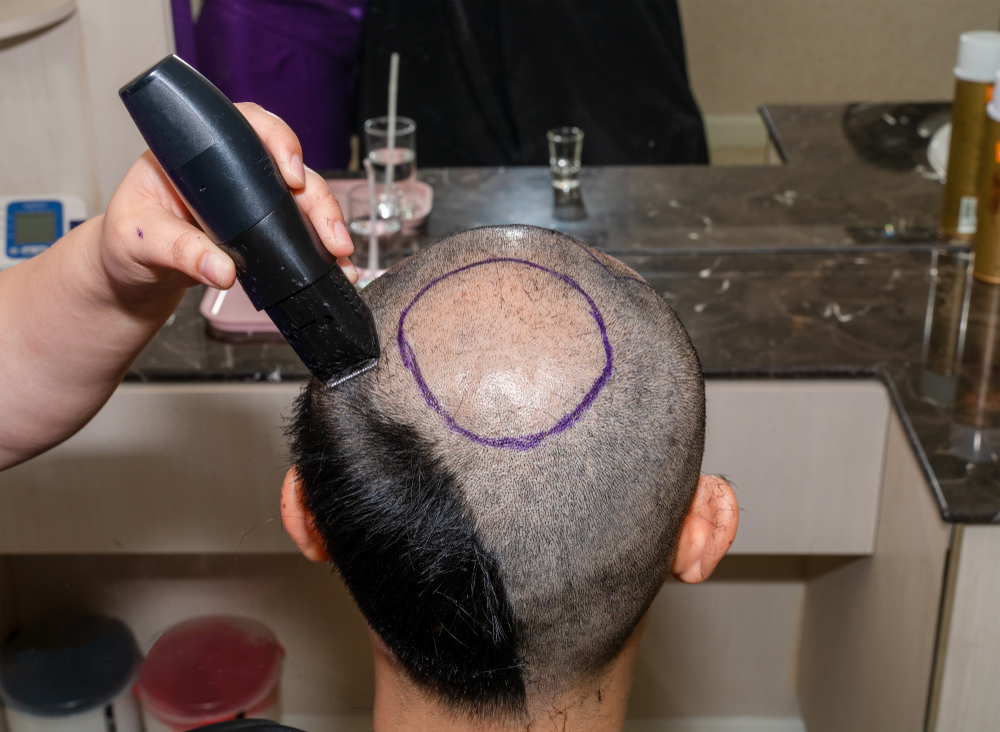Hair transplants have come a long way from their early days in the 1970s. Nowadays the procedure is a lot more precise and can leave you with real growing hair that even your barber won’t be able to tell came from surgery. And because of advances in technology, the cost of hair transplants have never been lower.
It’s proven that hair thinning and hair loss negatively impact every aspect of your life. Men and women who experience this affliction have trouble finding well-paying jobs and attracting the opposite sex. They experience higher rates of depression, social anxiety and a lack of self confidence.

Hair loss can be traced to an increase of internal Dihydrotestosterone (DHT) and collagen production. According to hair loss experts, excess DHT drastically increases collagen production in the hair follicle. When too much collagen lines the interior of the follicle, it narrows the pores, decreases blood flow and slowly strangles your hair to death. Eventually, collagen blocks the pore completely causing a lack of necessary blood flow. First your hair loses its sheen, then it thins and finally you lose your hair.
When pollution and environmental toxins are added to the mix, your hair is under constant attack. The good news is that it's now completely repairable thanks to new advancements in hair transplant procedures.
What Makes a Good Candidate
In order to be considered for hair transplant surgery, you will need to meet two criteria. The first is that you still have enough healthy hair to use for the transplant. So, sooner is better than later to have the surgery if you think you might want to. However, your doctor will probably want to wait until the loss has been occurring consistently over a few years before choosing surgery over less invasive techniques.
The second qualification is that the bald or thinned patches on your scalp are viable – that is, still capable of growing hair. When it comes to male pattern baldness, the follicles don’t disappear or die but instead shrink. Your doctor will be able to assess your case and determine if healthier follicles can be transplanted to thinned areas and start growing hair again.
Surgical Methods
There are many different approaches to hair transplantation. If you are looking for a modest change in the fullness of your hair, you may have a mini-graft, micro-graft, punch graft, slit graft, or strip graft. Surgeries that produce more dramatic results are scalp-reduction, tissue expansion, and flaps.
In most cases you will only require a local anesthetic to numb your scalp, but if you’re really nervous, your doctor may also prescribe a mild sedative. The time it will take depends on the method being used, but you can expect to spend between 4-8 hours on the table.
Before surgery, speak to your surgeon about how he or she will remove the healthy hairs for transplantation. One method is to take each hair individually. This can provide a more natural finished look, but it takes much longer to complete. The other option is for narrow strips of skin to be removed that contain many hairs. This will leave a scar, but once it fades, it shouldn’t be noticeable unless you keep your hair cropped short.
Once the healthy hairs have been removed, both the hairs and your scalp will be prepped for transplant. When they are ready, your surgical team will go to work implanting the hairs in their target locations. Afterwards, your scalp will be wrapped in bandages and you will be sent home with instructions for follow up care.


